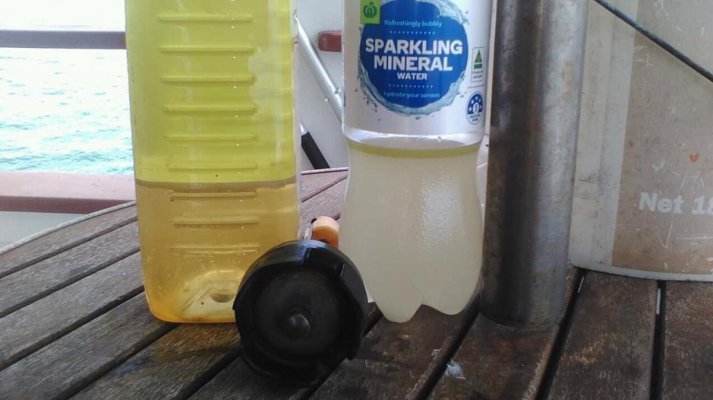Thanks C letric, and everyone. I intended to pump the bottom of the tank before our weekend outing,took some dowels to attach a plastic tube with zipties, but forgot the little hand pump. We left the dock anyway, checked several times for water in the Racor reservoir,none seen. Pickup must be above any water level. I`ll try again next visit. Meanwhile the additive I already use might be merging the water into the diesel as advertised. Our marina mechanic gave me a can of a water absorber into fuel, "Liquid Intelligence" to add 1:1000 to the tank, but it was so thick, like treacle, I decided it was only safe to add during a refuel, which we don`t need as tanks are about 85%. I`m fairly confident the volume of water was small,around 300ml,though the perp`s recollection of how short the squirt was before releasing the trigger gets shorter every mention.


